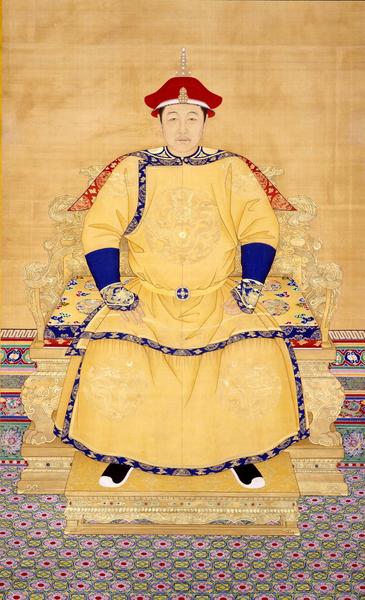
Shunzhi Emperor
| Name | Shunzhi Emperor |
| Title | Qing Dynasty emperor of China (1638–1661) |
| Gender | Male |
| Birthday | 1638-03-15 |
| nationality | Qing dynasty |
| Source | https://www.wikidata.org/wiki/Q310453 |
| pptrace | View Family Tree |
| LastUpdate | 2025-10-27T03:40:54.556Z |
Introduction
The Shunzhi Emperor (15 March 1638 – 5 February 1661), also known as Emperor Shizu of Qing, personal name Fulin, was the second emperor of the Qing dynasty and the first Qing ruler to govern over China proper. He was born in the Manchu bannered region of Manchuria and was the eldest son of Hong Taiji, the founding emperor of the Qing dynasty. Following Hong Taiji's death in 1643, a regency was established due to Fulin’s young age, with Dorgon, the 14th son of Nurhaci, and Jirgalang, a Nurhaci nephew, appointed as co-regents. The princes selected Fulin, aged five, as successor, and he was enthroned in Beijing in November 1644, under the era name "Shunzhi."
From 1643 to 1650, practical political power was primarily exercised by the prince regent Dorgon. During Dorgon's regency, the Qing forces primarily engaged in consolidating control over China, capturing significant portions of territory traditionally held by the Ming dynasty and suppressing Ming loyalist regimes, particularly in the southwest. A notable policy during this period was the "hair cutting command" of 1645, which mandated all Qing male subjects to shave their foreheads and adopt a Manchu-style queue, aimed at symbolizing submission and facilitating control, but it also provoked widespread resistance.
Following Dorgon's death on 31 December 1650, the young emperor began to assert personal rule. His reign was marked by efforts to curb corruption, reduce the influence of Manchu nobles, and promote Chinese administrative practices. The 1650s saw renewed resistance from Ming loyalists such as Koxinga and the Prince of Gui, but by 1661, the Qing had defeated the last significant opponents, including Koxinga's forces and the Prince of Gui.
The Shunzhi Emperor died at the age of 22 from smallpox, a disease endemic in China but which the Manchu population had little immunity against. He was succeeded by his third son, who became the Kangxi Emperor and reigned for over sixty years. Due to the limited surviving documentation from his era, the Shunzhi period remains relatively less known in Qing history.
In terms of historical background, the rise of the Qing involved the unification of Manchu tribes under Nurhaci in the late 16th and early 17th centuries, who established the Eight Banners system to organize military and social structures. Nurhaci's son, Hong Taiji, continued state-building efforts and renamed the Jurchens as "Manchus" in 1635, establishing the Qing dynasty in 1636. The Qing expanded their territory at the expense of the declining Ming, which was beset by internal strife, epidemics, and rebellions.
Berlin in 1643, Hong Taiji died without appointing a successor; subsequent power struggles among Manchu princes led to the selection of Fulin, with Dorgon acting as regent. During his regency, Dorgon orchestrated the Qing conquest of Beijing during the collapse of Ming authority, with military campaigns driven by alliances with Ming defectors and generals like Wu Sangui.
As emperor, Fulin implemented policies aimed at integrating Han Chinese into Qing governance, restoring traditional Chinese institutions, and promoting Confucian values. His reign included efforts to conduct civil service examinations, reestablish educational institutions such as the Hanlin Academy, and enact policies to bridge Manchu and Han identities. He also engaged in diplomatic relations with neighboring states, including tributary missions from Korea, Vietnam, Siam, and Tibet, and maintained diplomatic exchanges with the Tuping and Gassan Mongols. His policies reflected an attempt to legitimize Qing rule through Chinese cultural and political customs.
The emperor's personal life was marked by several marriages, including two empresses from Manchu clans and a favored consort, Consort Donggo, who bore him a son—later Kangxi—and other children. His health was fragile; he was notably cautious of smallpox, which eventually claimed his life. His death prompted a period of political uncertainty, with a forged will appearing to promote more Manchu nationalist policies, but subsequent rulers like Kangxi restored governance structures and policies favoring integration with Chinese society.
The Shunzhi Emperor's tomb is located in the Eastern Qing Tombs, established several years after his death. His legacy encompasses the consolidation of Qing rule over China, the early challenges of Qing governance, and the complex process of Sinicization of Qing institutions during the early years of Manchu rule.
Family Tree
Tap to expand more relatives